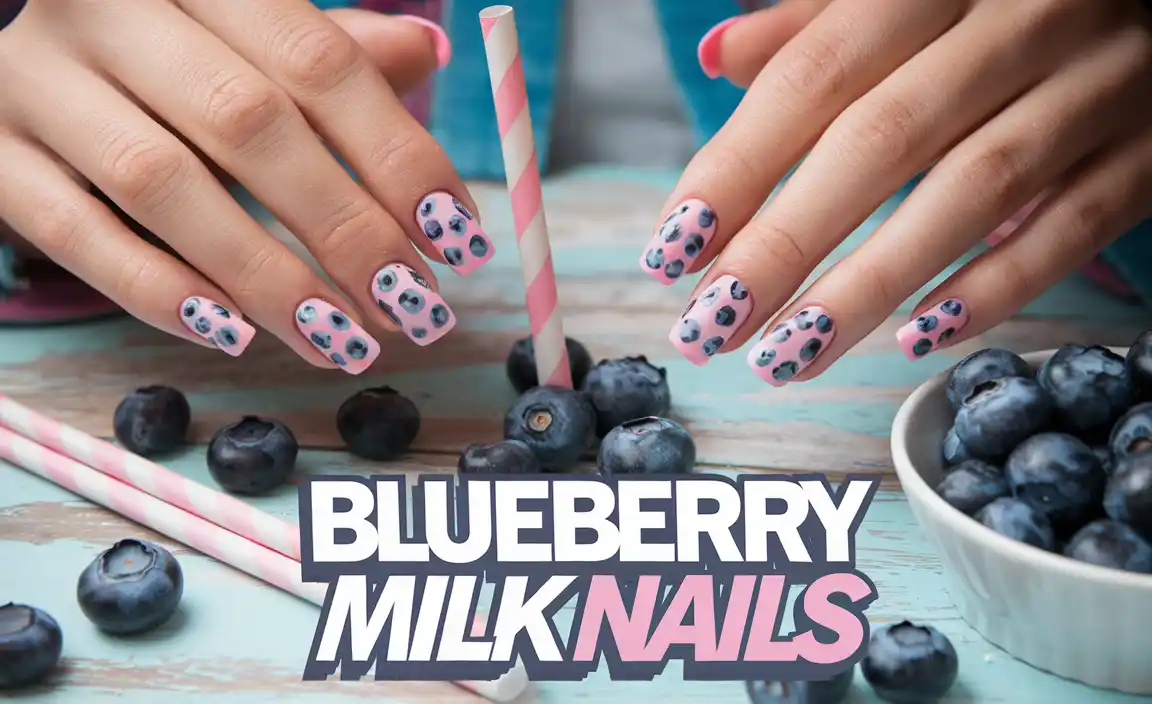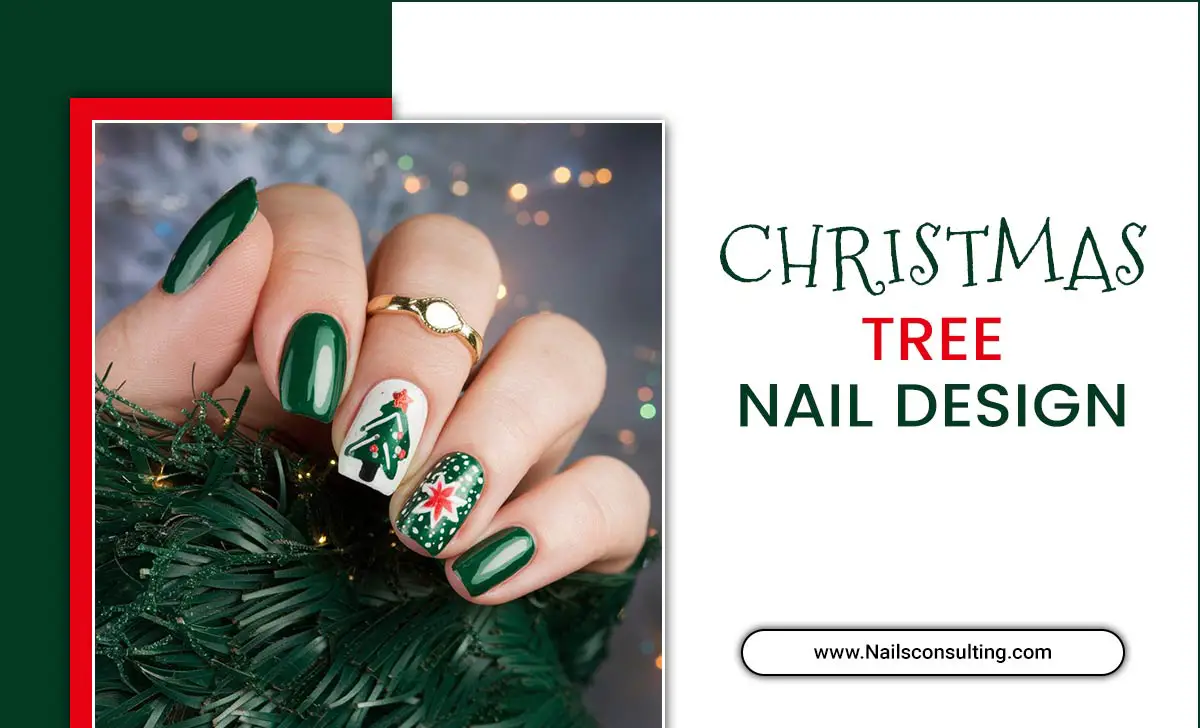Mismatched Nail Designs: Genius Unique Looks That Wow! Mix and match colors, patterns, and styles across your nails for a fun, creative, and totally unique manicure that expresses your personality. It’s easier than you think to create standout mismatched nail art that turns heads!
Tired of your nails looking the same on every finger? Do you crave a little more pizzazz than a single color can offer? You’re not alone! Many of us love the idea of creative nail art but find it a bit intimidating. The good news? Mismatched nail designs are your secret weapon for effortless individuality. They let you play with different looks without needing perfect symmetry, making them super fun and surprisingly easy to achieve. Let’s dive into how you can rock this trend and express your unique style!
What Exactly ARE Mismatched Nail Designs?
Simply put, mismatched nail designs involve intentionally pairing different looks on each fingernail, or on different sets of nails. Think of it as an artistic expression where each nail tells a little story, or contributes to a larger, eclectic vibe. Instead of having five nails that are identical, you might have one with stripes, another with polka dots, a third in a solid bold color, a fourth with a subtle glitter, and the fifth with a completely different pattern or shade. It’s all about embracing variation and creating a cohesive, yet delightfully asymmetrical, manicure.
This trend is brilliant because it frees you from the pressure of matching everything perfectly. It’s a celebration of creativity and personal style, allowing you to showcase multiple facets of your taste all at once. Whether you’re a minimalist who likes a pop of difference or a maximalist who loves a riot of color and design, mismatched nails can work for you.
Why Mismatched Nails Are Perfect for Beginners
If you’re new to the nail art scene, mismatched designs are your best friend. Here’s why:
- Less Pressure for Perfection: Since each nail is different, minor imperfections are hardly noticeable and actually add to the charm.
- More Room for Experimentation: You can try out different techniques and colors without committing to a single look for all ten nails.
- Cost-Effective: You don’t need to buy multiple polishes of the exact same color family to ensure a perfectly matched set.
- Expressive and Fun: It’s a fantastic way to show off your personality and mood!
The beauty of mismatched nails is their inherent forgiveness. You don’t need to worry if your hand slipped a little while painting stripes on one nail when another has a floral design. The contrast actually makes it work!
Getting Started: Your Mismatched Mani Toolkit
Before you dive into creating your unique looks, having the right tools makes all the difference. You don’t need a professional salon’s worth of gadgets, just a few essentials:
- Nail Polish in Various Colors: This is your primary medium! Choose colors that complement each other, even if they’re not a direct match.
- Base Coat: Essential for protecting your natural nails and making your polish last longer.
- Top Coat: Seals your design and adds shine, providing durability.
- Dotting Tools: These have a small ball on the end and are perfect for creating dots, small flowers, and other small details. Different sizes allow for varied dot sizes.
- Fine-Tipped Nail Art Brushes: For drawing lines, swirls, and intricate patterns.
- Nail Polish Remover & Cotton Swabs/Pads: For cleaning up mistakes and shaping edges.
- Optional: Nail Stickers/Decals: A super easy shortcut for adding complex designs!
- Optional: Glitter Polish: For a touch of sparkle.
As you get more comfortable, you might explore striping tape, stamping plates, or even custom brush sets. But for starting out with mismatched designs, the above are more than enough to get you going!
Genius Mismatched Nail Design Ideas to Inspire You
Now for the fun part! Let’s explore some popular and easy-to-execute mismatched nail design concepts that are perfect for beginners. The key is often to pick a theme, a color palette, or a general style to keep your varied nails looking intentionally curated rather than chaotic.
1. The Color Block Mix
This is a fantastic starting point. Choose 2-3 complementary or contrasting colors. Then, divide each nail into different sections using those colors. For example:
- Thumb: Solid color A
- Index Finger: Solid color B
- Middle Finger: Split down the middle, half color A, half color B
- Ring Finger: Solid color C (a neutral or accent)
- Pinky Finger: Color A with a few dots of color B
Pro-Tip: Use painter’s tape to get clean lines for your color blocking. Apply the tape once the first color is dry, then paint the second color over it. Peel the tape off when the second color is still slightly wet for the cleanest edges.
2. The Pattern Party
This involves using different patterns on different nails. Aim for patterns that share at least one color, or stick to a general theme (like geometric, floral, or abstract).
- Nail 1: Stripes (e.g., black and white)
- Nail 2: Polka dots (e.g., red and white)
- Nail 3: Solid color that matches one of the pattern colors (e.g., solid red)
- Nail 4: A different pattern, like chevrons or abstract squiggles (e.g., using the same three colors as above)
- Nail 5: Glitter polish or a metallic shade
Beginner Hack: Use dotting tools for easy polka dots! For stripes or more intricate patterns, nail art stickers or stencils are your secret weapon.
3. The Accent Nail Elevated
This is a classic approach where one or two nails stand out with a more intricate design, while the others are a solid color. With mismatched nails, you can take this further:
- Set 1: 3 nails in a solid, chic color (e.g., deep navy)
- Set 2: 1 nail with a detailed design using color from Set 1 and a contrasting shade (e.g., a starry night effect)
- Set 3: 1 nail with a complementary texture or pattern (e.g., a subtle shimmer or a simple geometric accent)
This is great for those who like a subtle nod to nail art but want something more than just plain polish.
4. The Ombré Explosion
Ombré (gradient) nails are beautiful. You can have an ombré effect on one or two nails, and then use the transitioning colors in solid shades on the other nails. Or, try a different ombré color combination for different nails within the same set!
- Nails 1 & 2: Ombré from light pink to coral.
- Nails 3 & 4: Ombré from yellow to orange.
- Nail 5: A solid teal polish that complements the warm tones beautifully.
Tip: Using a makeup sponge is an easy way to create ombré effects at home. Apply two colors side-by-side onto the sponge, then dab onto your nail.
5. The Minimalist Mismatch
This is for those who love subtlety. Think clean lines, delicate details, and a limited color palette.
- Nail 1: A sheer nude polish.
- Nail 2: Sheer nude with a single, thin gold stripe near the cuticle.
- Nail 3: Solid soft grey.
- Nail 4: Solid soft grey with a tiny metallic dot on one side.
- Nail 5: A different sheer shade, like a pale baby blue.
The key here is restraint. The differences are small and artistic, creating a sophisticated yet unique look.
6. The Theme Dream
Pick a theme! This makes it much easier to coordinate everything. Examples include:
- Celestial: Navy, silver, gold, white. Use solid colors, starry patterns, moon accents.
- Oceanic: Blues, greens, pearly whites. Think waves, stripes, a single pearl accent nail.
- Floral: Pastels, greens, bright pops. Different floral designs, leaf accents, or plain pastels.
- Candy Shop: Pinks, purples, blues, yellows. Swirls, dots, rainbow accents.
Having a theme gives your mismatched nails a common thread, making the overall look intentional and cohesive.
Step-by-Step Guide to Your First Mismatched Mani
Ready to give it a go? Here’s a simple, beginner-friendly approach to creating a stylish mismatched nail design using a “Pattern Party” concept.
Step 1: Gather Your Supplies
For this tutorial, let’s go with a simple, chic palette: a soft pink, a black, a white, and a subtle silver glitter polish. You’ll also need a base coat, top coat, and a dotting tool (or a toothpick).
The American Academy of Dermatology Association recommends keeping nails trimmed and free of moisture to maintain healthy nails, which is a great first step before any polish application. You can find more nail care tips from the AAD here.
Step 2: Prep Your Nails
Start with clean, dry nails. Apply a thin layer of your base coat and let it dry completely. This protects your nails and ensures a smoother application of color.
Step 3: Choose Your Mani Layout
Decide which nail will have which design. For example:
- Thumb: Solid Soft Pink
- Index Finger: Black and White Stripes
- Middle Finger: Solid Black
- Ring Finger: White with Pink Polka Dots
- Pinky Finger: Silver Glitter
Step 4: Apply Base Colors
Paint your thumb and middle finger with their respective solid colors (soft pink and black). Let them dry thoroughly.
Step 5: Create the Stripes (Index Finger)
Once the black polish on your middle finger is dry, you can start on the stripes for your index finger.
Option A (Freehand): Using a fine-tipped brush dipped in white polish, carefully paint thin horizontal or vertical stripes. Take your time!
Option B (Easier!): Use striping tape! Apply thin strips of tape vertically or horizontally onto your nail (over dry black polish). Paint over the tape with white polish. Once the white is slightly damp, carefully peel off the tape. This gives super sharp lines.
Step 6: Add the Polka Dots (Ring Finger)
Apply two thin coats of white polish to your ring finger and let it dry completely. Then, dip your dotting tool (or the tip of a toothpick) into the pink polish. Gently dab dots onto your white nail to create your polka dot pattern. Vary the spacing for a more organic look.
Step 7: Apply Glitter (Pinky Finger)
Apply one or two coats of your silver glitter polish to your pinky finger. Glitter polishes often have good coverage in one coat, but a second can make it more opaque and sparkly.
Step 8: Apply Top Coat
Once all the designs are completely dry, apply a generous layer of top coat over all your nails. This will seal in your designs, add shine, and help prevent chipping. Be sure to cap the free edge of your nails by sweeping the brush along the tip.
Step 9: Clean Up
Dip a small brush or cotton swab into nail polish remover to carefully clean up any polish that may have gotten onto your skin around your nails.
Tips for Maintaining Your Mismatched Nails
Mismatched nails are just as durable as regular manicures if cared for properly. Here are a few tips:
- Wear Gloves: When doing dishes or cleaning, wear rubber gloves to protect your nails from harsh chemicals and prolonged water exposure.
- Moisturize: Keep your cuticles and hands hydrated with a good hand cream or cuticle oil. Healthy cuticles make your manicure look polished.
- Refresh Top Coat: Every 2-3 days, apply an extra layer of top coat to refresh the shine and add protection.
- Avoid Using Nails as Tools: Try not to ‘dig’ or ‘scrape’ with your nails. This can chip polish or even damage the nail itself.
- Touch-Ups: If a small chip occurs on one nail, you can often touch it up with the specific polish color without messing up the whole manicure.
For more insights into nail health, the NHS offers practical advice on nail care that’s universally applicable.
Pros and Cons of Mismatched Nail Designs
Like any trend, mismatched nails have their upsides and potential downsides:
| Pros | Cons |
|---|---|
| High Originality: Each manicure is truly unique and allows for self-expression. | Can Be Time-Consuming: If you’re going for complex designs on multiple nails, it can take longer than a solid color. |
| Beginner-Friendly: Forgiving of small mistakes; less pressure for perfect symmetry. | Learning Curve for Intricate Designs: While generally easy, mastering complex patterns takes practice. |
| Trendy and Fashion-Forward: A fun way to stay current with nail art trends. | Requires More Supplies: You’ll likely need a wider variety of polishes and tools compared to a single-color manicure. |
| Adaptable: Works for various styles, from minimalist to maximalist. | Potential for “Too Much”: If not planned carefully, the look can appear cluttered rather than cohesive. |
Frequently Asked Questions About Mismatched Nails
Does each nail have to be completely different?
Answer: Not at all! Mismatched designs can range from having just two nails with a different design to having every nail unique. You can also have pairs of nails that match, while the others are different. The goal is variety, not necessarily complete difference across all ten fingers.
How do I make sure my mismatched nails look intentional and not messy?
Answer: The best way is to stick to a chosen color palette or theme. For example, use only blues and silvers, or base your designs around a floral motif. This creates a visual connection between the nails, making the mismatch look like a deliberate artistic choice.
What are the easiest mismatched nail designs for a beginner?
Answer: Start with simple techniques. Options include: one accent nail with glitter or a simple pattern (like dots or stripes), solid colors on most nails with one or two nails featuring a two-color design, or using nail stickers for instant, complex looks. Color blocking with tape can also be very beginner-friendly.
Can I use nail stickers or decals for mismatched designs?
Answer: Absolutely! Nail stickers and decals are fantastic for mismatched designs. You can use them on one or two nails to add intricate patterns or images while keeping other nails solid colors. They’re a quick and easy way to achieve professional-looking results.
How often should I change my mismatched nail designs?
Answer: Similar to any manicure, you can change them whenever you feel the need for a refresh, typically every 1-2 weeks, or when they start to chip or grow out. Mismatched designs can be so fun that you might find yourself wanting to switch them up even sooner to try new combinations!
What kind of polish colors work best for mismatched designs?
Answer: You can truly use any colors you love! However, for a cohesive look, try to stick to a specific color palette (e.g., pastels, neons, jewel tones) or one that incorporates complementary shades. Even contrasting colors can work if there’s a unifying element like a shared pattern or accent metallic shade.
Conclusion: Embrace Your Unique Style
Mismatched nail designs are more than just a trend; they are a beautiful invitation to embrace your individuality and have fun with your look. Whether you choose bold colors, delicate patterns, or a combination of everything, the power of mismatched nails lies in their ability to break free from convention and showcase your personal style. They empower you to experiment, to play, and to express yourself in a way that feels authentic. Don’t be afraid to mix, match, and create something that’s uniquely yours. So grab your favorite polishes, try out some of these ideas, and get ready to rock a manicure that’s as vibrant and one-of-a-kind as you are!



